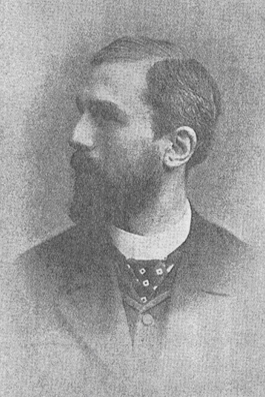Carlo Fornasini facts for kids
Quick facts for kids
Cav. Dott.
Carlo Fornasini.
|
|
|---|---|
 |
|
| Born | 3 November 1854 |
| Died | 24 December 1931 (aged 77) Bologna, Kingdom of Italy
|
| Alma mater | University of Bologna |
| Known for | Study of Foraminifera |
| Spouse(s) | Emilia née Erhardt |
| Children |
|
| Scientific career | |
| Thesis | (1877) |
| Doctoral advisor | Giovanni Capellini |
| Author abbrev. (zoology) | Forn. |
Carlo Fornasini (born November 3, 1854 – died December 24, 1931) was an Italian scientist who studied tiny fossils. He was a pioneer in using these small fossils, called Foraminifera (or 'forams'), to figure out the age of rock layers in the ocean. This method is known as biostratigraphy.
Contents
About Carlo Fornasini
Carlo Fornasini was the third son of Francesco Fornasini, a doctor, and Carlotta Ferraresi.
Early Life and Education
He studied natural sciences at the University of Bologna in Italy. His teacher was Giovanni Capellini, who was the Professor of Geology there.
In 1877, Carlo graduated with high honors. His final project, called a thesis, showed that certain rocks near Bologna were from the Pliocene period (about 5.3 to 2.6 million years ago). Before his research, people thought these rocks were much older, from the Miocene period (23 to 5.3 million years ago).
Sadly, his professor, Capellini, published a paper about this discovery. He made it seem like Carlo was just an assistant and took credit for Carlo's ideas. This kind of behavior is not acceptable in science today. Because of this, Carlo didn't publish any scientific work for the next four years.
Return to Science and Important Roles
In 1881, Carlo Fornasini started working in palaeontology again. Palaeontology is the study of fossils. He helped organize an important meeting called the 2nd International Geological Congress in Bologna. At this meeting, scientists from different countries agreed on important rules for naming and classifying rocks and fossils.
Carlo was one of the first members of the Italian Geological Society, which was started during the Congress. He stayed a member for many years and helped lead the society.
- In 1883, he was given the title cavaliere, which means 'knight' in Italy.
- He became a member of several important scientific groups, like the Reale Accademia del Poggio and the Reale Accademia delle scienze dell'Istituto di Bologna.
- From 1894 to 1910, he was a director at the Accademia in Bologna.
- In 1895, he became an assistant at the Museo Geologico (Geological Museum) and later became its conservatore (curator) in 1903. A curator is someone who manages a collection, like in a museum.
- In 1895, Carlo Fornasini and another scientist, Vittorio Simonelli, started a science magazine called Rivista italiana di paleontologia (Italian Review of Palaeontology).
By 1911, Carlo's health made it hard for him to continue his scientific work. However, he still loved his field. He gave his entire library and fossil collection to the Museo Geologico.
Family and Community Life
Carlo Fornasini married Emilia Erhardt. They had two children, a son named Carlo Francesco and a daughter named Elsa.
He was also the mayor of Poggio Renatico, a town about 30 miles (48 km) northeast of Bologna, for almost 30 years. In 1902, he donated land in Poggio Renatico where the church of San Michele now stands.
Today, there is a bronze plaque in the Museo Geologico that honors Carlo Fornasini.
Scientific Discoveries
Carlo Fornasini's main focus was always on Foraminifera. These are tiny, single-celled organisms that live in the ocean and often have shells. When they die, their shells become fossils. Carlo became a world expert on them. He mostly worked as an independent scientist, meaning he wasn't directly employed by a university or big research center.
He wrote more than sixty scientific papers. Many of these were about "Italian Microfauna of the Tertiary" (a past geological period). In these papers, he carefully studied all the information available. He also identified synonymy, which is when two or more scientists accidentally describe the same species as new. Finding these duplicates is very important for organizing and understanding taxonomy, which is the science of classifying living things.
The WoRMS database, which tracks marine species, lists 78 species of Foraminifera that Carlo Fornasini described. Even today, he is still recognized as the original describer for 77 of these species. This shows how careful and accurate his work was!
Species Named After Him
The WoRMS database also lists 18 species of Foraminifera that have 'fornasini' in their scientific name. These were likely named in honor of Carlo Fornasini by other scientists who admired his work.
Fondazione Dott. Carlo Fornasini
In 1964, Carlo Fornasini's son, Carlo Francesco, left land and money in his will to create a foundation in his father's memory. This foundation is called the Fondazione Dott. Carlo Fornasini and is located in Poggio Renatico.
Its first goal was to support research into human organ transplantation. Later, its goals expanded to include social and human sciences, especially focusing on ethics and bioethics.

